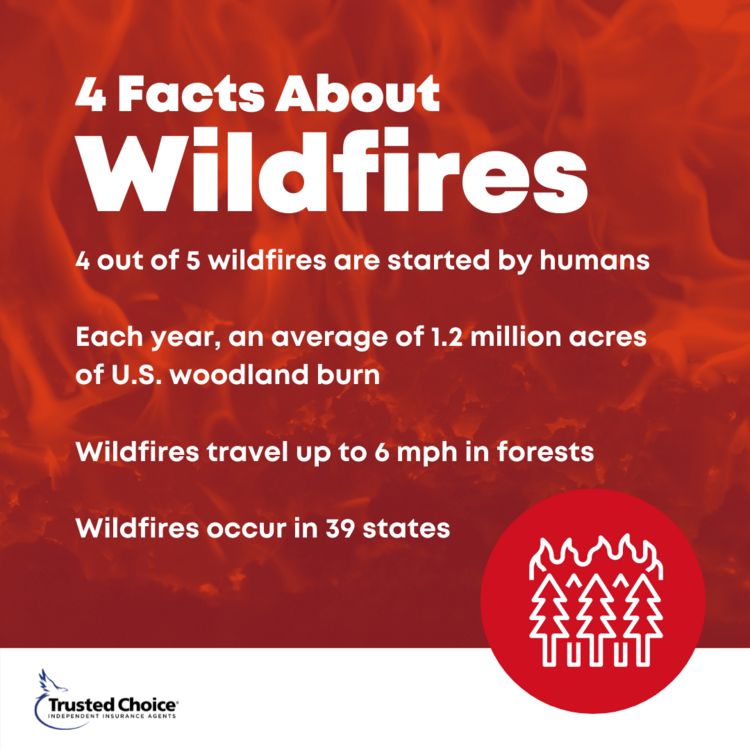Frequently Asked Questions
All You Ever Wanted to Know About Insurance
Personal Insurance: Home Insurance
Claims
WILDFIRE -- Take these steps to protect your rural home

Fire requires oxygen, heat, and fuel. An ember carries heat and is sustained by the oxygen in a fire.
Here's a tip sheet for some ways to help protect your rural home or you can watch this 2-minute video from the National Fire Protection Association.
Remember, if your facility cannot ignite, it cannot burn.
A single spark can start a blaze, and a wildfire can produce thousands of sparks in the form of embers. Also known as “firebrands,” these tiny glowing specks are often carried on the wind far beyond their location of origin, dramatically increasing the potential for a wildfire to perpetuate itself and elude containment. Fire requires oxygen, heat, and fuel.
An ember carries heat and is sustained by the oxygen in the air. But if there is no fuel for it to ignite, it cannot spread a fire. Use the following tips from the National Fire Protection Association (NFPA) to reduce the fuel potential of your property. Remember, if your facility cannot ignite, it cannot burn.
- Debris such as pine needles, leaves, and deadfall, also known as “litter” are all potential fuel sources. Identify any areas on your property where litter has naturally accumulated or been driven by wind. It is likely that these are the places embers will also gather, and subsequently ignite, if fuel is present.
- If such fuels have accumulated, especially within five feet of your facility, implement measures to regularly remove and dispose of the buildup promptly. Consistent grounds maintenance is a simple, yet incredibly effective method of wildfire prevention.
- A building’s roof is the most vulnerable to ignition from embers. Even if it is fire-resistant, an accumulation of fuel could still ignite flammable exterior siding. Gutters filled with litter are also susceptible to igniting and introducing flame into eaves.
- Ensure all exterior ventilation sources are covered by fine, non-flammable mesh that will prevent embers from entering your facility and igniting flammable materials within.
- Analyze the landscaping within five feet of your facility. Prune dead vegetation from any plants. If mulch or other flammable material is used for ground cover adjacent to your facility, consider replacing it with a fire-resistant alternative such as gravel.
- Identify any other flammable items on your property, such as lawn furniture, brooms and other tools, outbuildings, and so on. This allows you to picture how a fire might spread, which in turn reveals the actionable steps you can take to prevent embers from igniting.
For more information, contact your insurance Agent at (208) 746-9646 or (208) 882-8544 or email LossControl [at] Am-Ins [dot] com.


